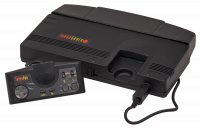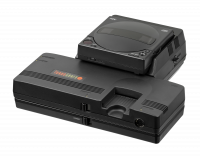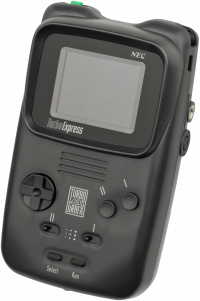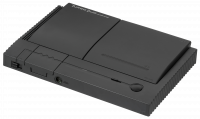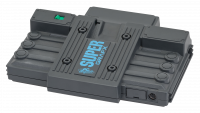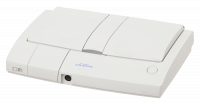TG16:TurboGrafx-16 Mods Wiki: Difference between revisions
No edit summary |
mNo edit summary |
||
| Line 63: | Line 63: | ||
* <s title="Placeholder - Guide not created yet!" class="visible"> [[TG16:Power Supply Fuse]] </s> | * <s title="Placeholder - Guide not created yet!" class="visible"> [[TG16:Power Supply Fuse]] </s> | ||
* [[ConsoleMods_Wiki:Cartridge_Cleaning|Game Cartridge / Connector Cleaning]] | * [[ConsoleMods_Wiki:Cartridge_Cleaning|Game Cartridge / Connector Cleaning]] | ||
* <s title="Placeholder - Guide not created yet!" class="visible"> [[ | * <s title="Placeholder - Guide not created yet!" class="visible"> [[Replacing Capacitors]] </s> | ||
* [[ConsoleMods_Wiki:Disc Drive Repair|Disc Drive Repair (Turbo Duo)]] | * [[ConsoleMods_Wiki:Disc Drive Repair|Disc Drive Repair (Turbo Duo)]] | ||
</div> | </div> | ||
Revision as of 20:05, 16 July 2022
The PC Engine/TurboGrafx-16 is an 8-bit console from the fourth generation of video game consoles. Designed by Hudson Soft and manufactured and sold by electronics giant NEC, the console was initially released in Japan as the PC Engine on October 30th, 1987 followed by Europe (1989) and was released in North America (August 29th, 1989) as the TurboGrafx-16. The console used small credit card-sized cartridges known as HuCards and was also the first console to play games on optical media via a CD-ROM expansion, first released in 1988. It was also the first console to have a handheld variant — the TurboExpress — which could play the same games as the home consoles. At least 17 different model variations were released, with the most significant models being part of the TurboDuo (or PC Engine Duo) line which incorporates the CD-ROM² add-on directly into the hardware. Although it was a success in Japan, the console saw sluggish sales in North America and was discontinued there by 1993. NEC and Hudson would unsuccessfully follow up on the PC Engine with the 32-bit PC-FX in 1994, but the PC Engine continued to see releases in Japan until 1999.
General Information
Technical Information
General Mods
Video Mods
TG16:Video Output Notes- TG16:Super SD System 3
- TG16:Super HD System3 Pro
Jailbar Fix 1TG16:eTim's RGB Mod (Turbo Duo)TG16:Voultar's RGB Mod (Turbo Duo)TG16:GameSX's RGB Mod (Turbo Duo)YPbPr Component ModS-video ModComposite Mod
Repair Guides
Flash Carts |
Other |
